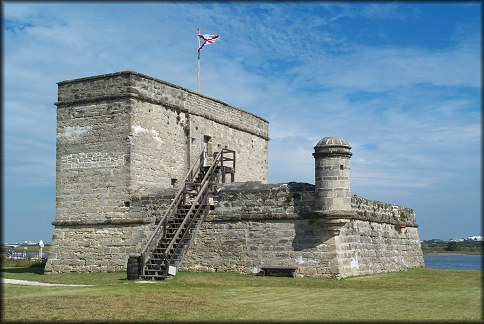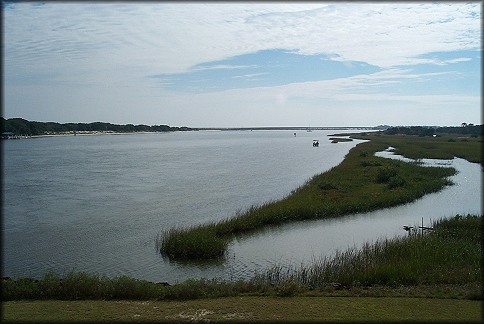| Field Trip To Matanzas Inlet | |
| By Bill Frank | |
|
On Sunday, November 3rd, four members of the Jacksonville Shell Club (Bill Frank, Pam Rice, D. D. Jewell, Charlotte Lloyd) and Charlotte’s friend Frank, car-pooled to the now condominium sprouting area at Matanzas Inlet (just north of Marineland) to take advantage of the day’s minus 0.86 tide - ostensibly to collect the area’s Cinctura hunteria (G. Perry, 1811) [Eastern Banded Tulip] variety which has orange to red (rather than violet-brown spiral bands). This color variant is very rare to absent in other Florida populations. |
|
 |
Fort Matanzas On Rattlesnake Island |
|
By prior arrangement, the group met at the Fort Matanzas Ranger Station where they availed themselves of the National Park Service’s free 45-minute guided boat/land tour of 16th Century Fort Matanzas on “Rattlesnake Island.” It was quite interesting – and yes the ranger confirmed the obvious – the island had more than its share of rattlesnakes. It was hard to imagine the difficult day-to-day life that the nine Spanish soldiers (one officer and eight enlisted men) faced while manning this small meager six cannon outpost in the middle of nowhere – guarding the southern approach to St. Augustine. Following the tour it was time to get down to some “serious shelling” in the Matanzas River just north of the inlet. Unfortunately, to put it succinctly, the collecting was horrible. Other than a medium-sized Busycon perversum (Linnaeus, 1758) [Lightning Whelk] found by Charlotte, the only other live species seen were Phrontis vibex (Say, 1822) [Bruised Nassa], Ilyanassa obsoleta (Say, 1822) [Eastern Mud Snail], a pair of Gemophos tinctus (Conrad, 1846) [Tinted Cantharus], and ever-present Littorina irrorata (Say, 1822) [Marsh Periwinkle]. |
|
|
Matanzas River Looking South Toward Inlet |
|
|
|
|
|
It was then decided to return north and use the remainder of the day’s minus tide to shell the area near St. Augustine Inlet at Vilano Beach, where during a trip during July, Charlotte had found both living and dead specimens of the elusive Tulip as well as a small Triplofusus giganteus (Kiener, 1840) [Horse Conch]. After a thorough search both north and southeast of the new Vilano Beach Bridge, it was obvious that this was not going to be our day. Phrontis acuta (Say, 1822) [Sharp Nassa], Mercenaria mercenaria (Linnaeus, 1758) [Northern Quahog], and very colorful Urosalpinx cinera (Say, 1822) [Atlantic Oyster Drill] joined our list of live specimens found. Three additional Lightning Whelk were also seen; some of which were enjoying a Quahog meal. As the tide began rushing in, it was time to return home after enjoying another day “in the field” communing with nature. |
|
|
Gemophos tinctus (Conrad, 1846) [Tinted Cantharus] Found Inside The Inlet |
|
|
|
|

![Gemophos tinctus (Conrad, 1846) [Tinted Cantharus] Found Inside The Inlet](poltl.jpg)